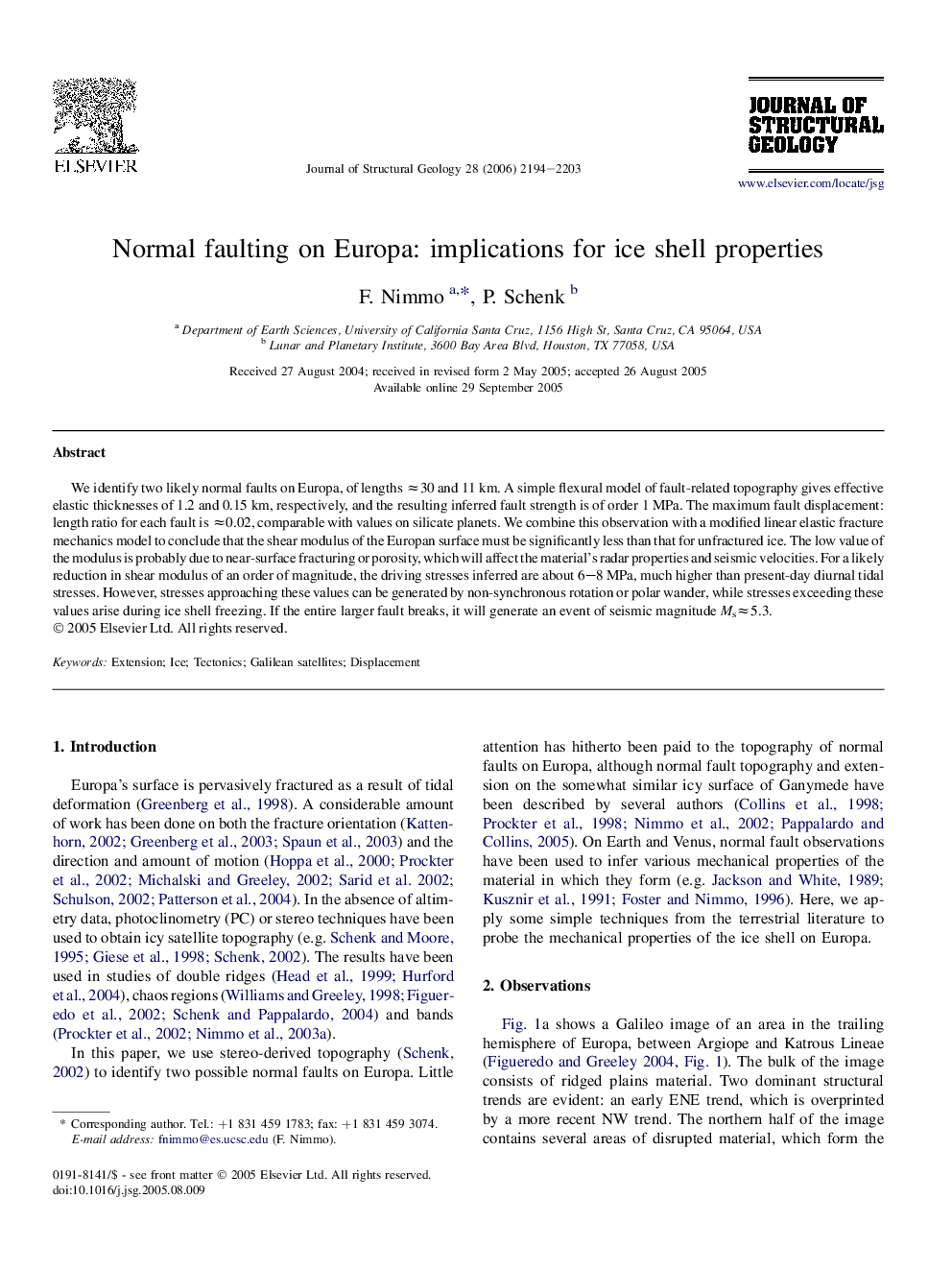| Article ID | Journal | Published Year | Pages | File Type |
|---|---|---|---|---|
| 4734468 | Journal of Structural Geology | 2006 | 10 Pages |
Abstract
We identify two likely normal faults on Europa, of lengths â30 and 11Â km. A simple flexural model of fault-related topography gives effective elastic thicknesses of 1.2 and 0.15Â km, respectively, and the resulting inferred fault strength is of order 1Â MPa. The maximum fault displacement: length ratio for each fault is â0.02, comparable with values on silicate planets. We combine this observation with a modified linear elastic fracture mechanics model to conclude that the shear modulus of the Europan surface must be significantly less than that for unfractured ice. The low value of the modulus is probably due to near-surface fracturing or porosity, which will affect the material's radar properties and seismic velocities. For a likely reduction in shear modulus of an order of magnitude, the driving stresses inferred are about 6-8Â MPa, much higher than present-day diurnal tidal stresses. However, stresses approaching these values can be generated by non-synchronous rotation or polar wander, while stresses exceeding these values arise during ice shell freezing. If the entire larger fault breaks, it will generate an event of seismic magnitude Msâ5.3.
Related Topics
Physical Sciences and Engineering
Earth and Planetary Sciences
Geology
Authors
F. Nimmo, P. Schenk,
